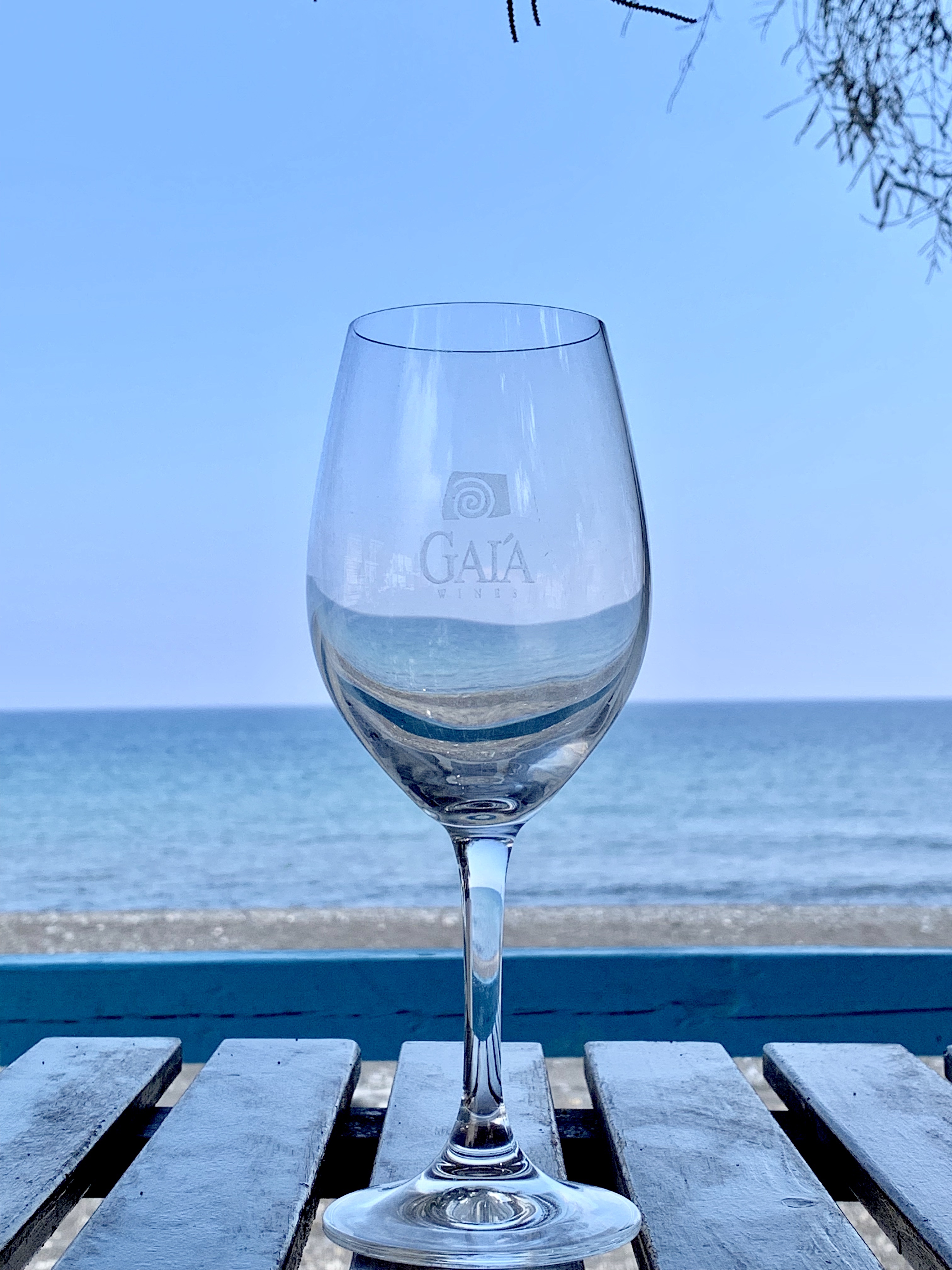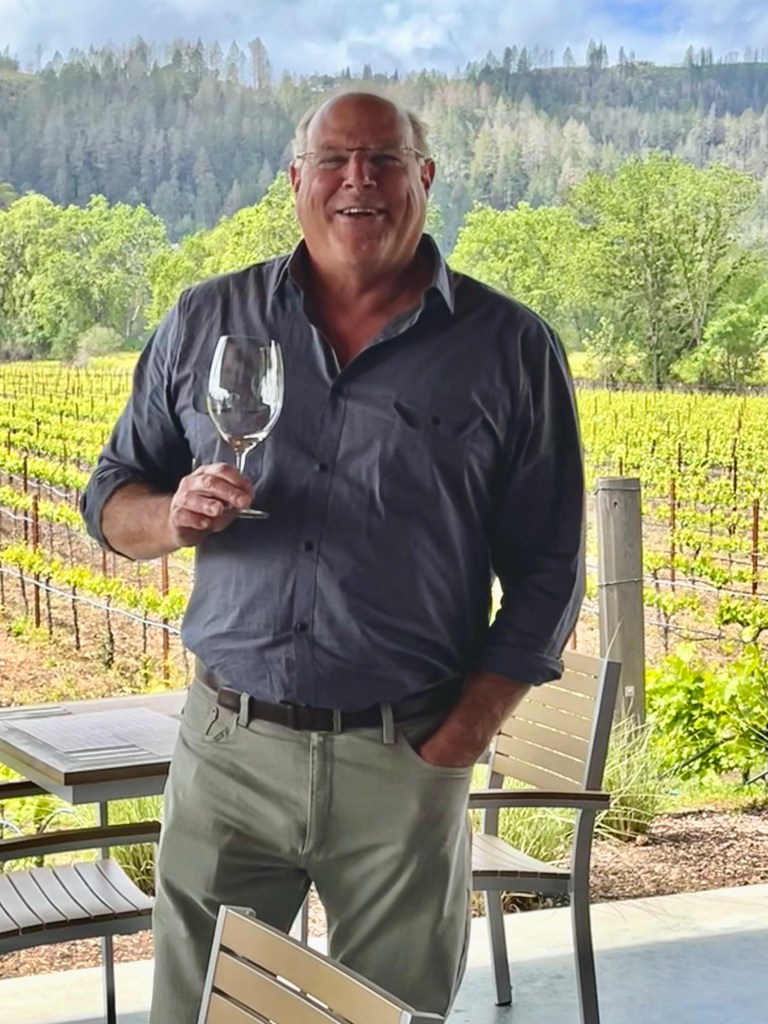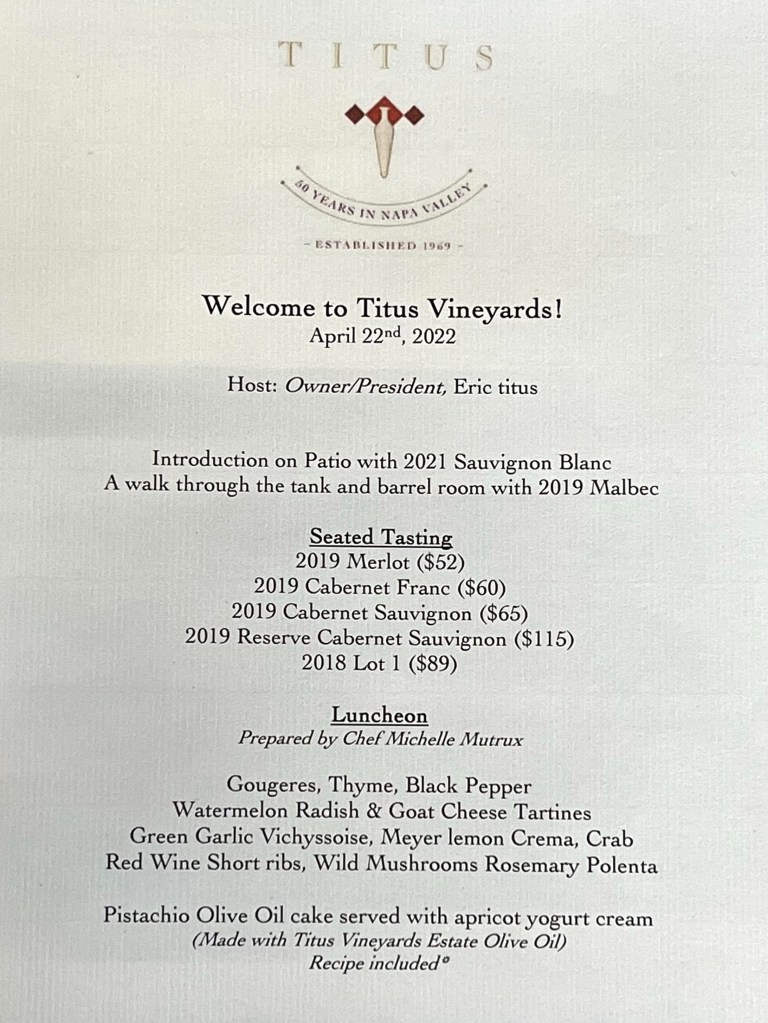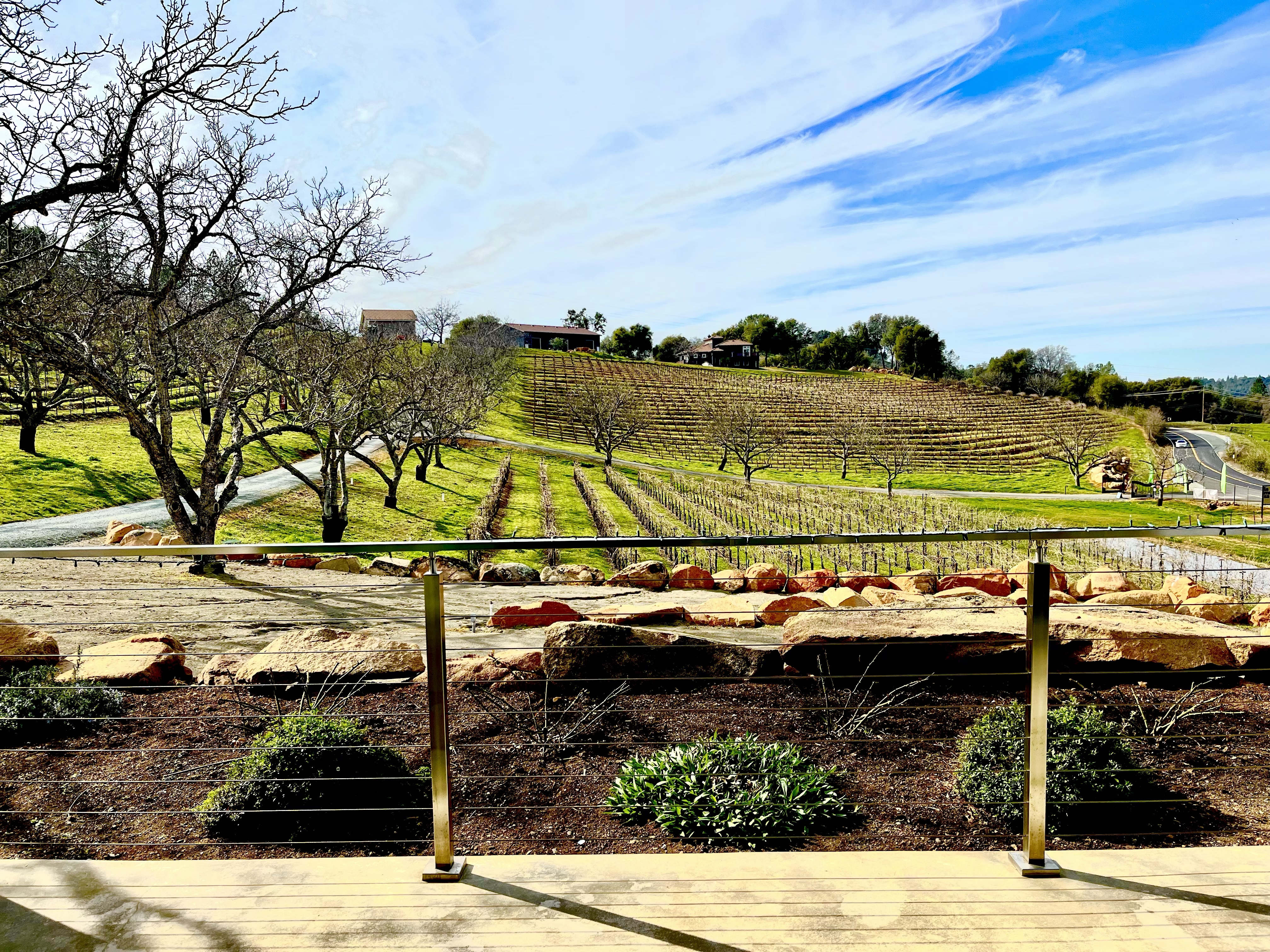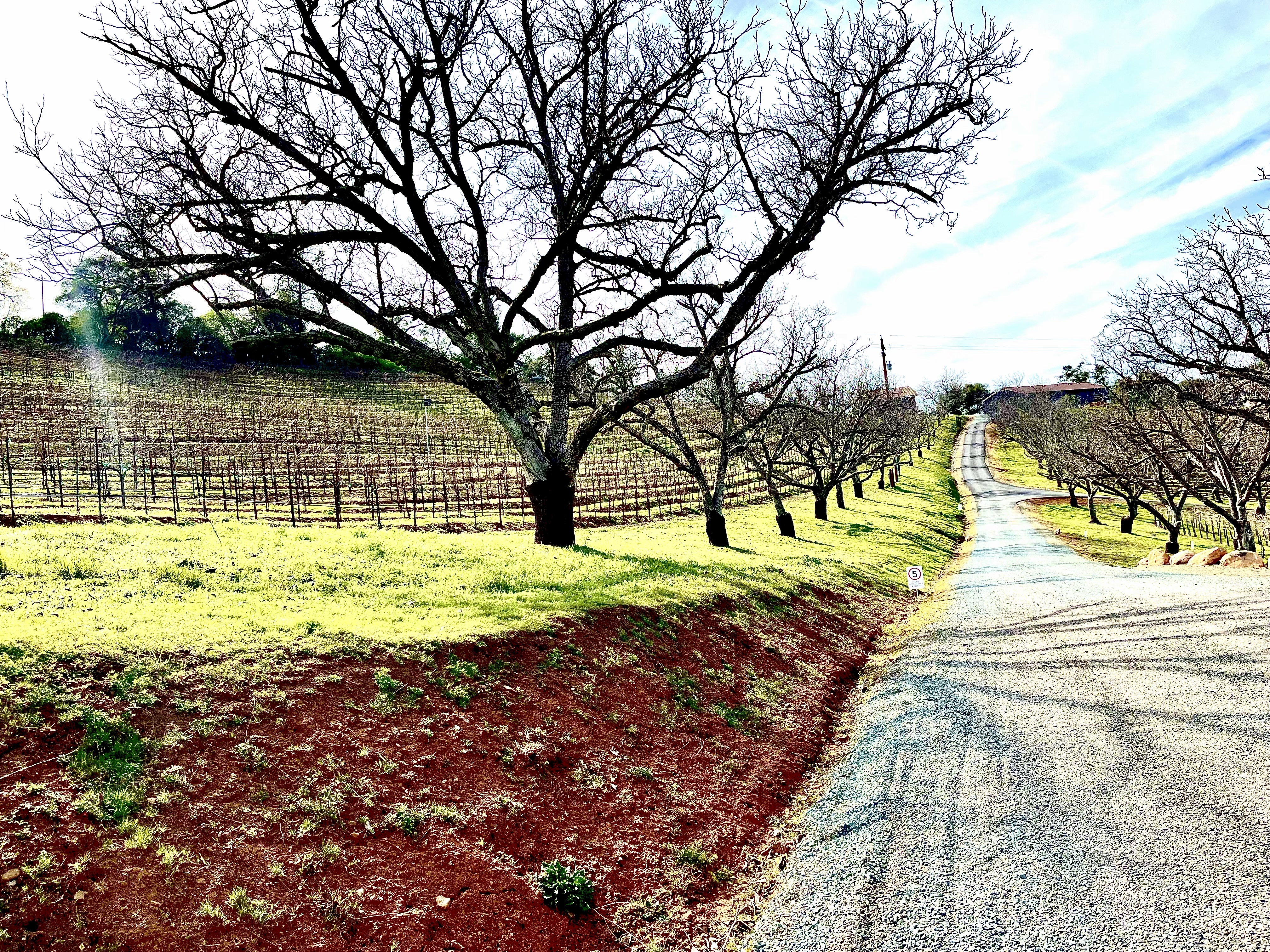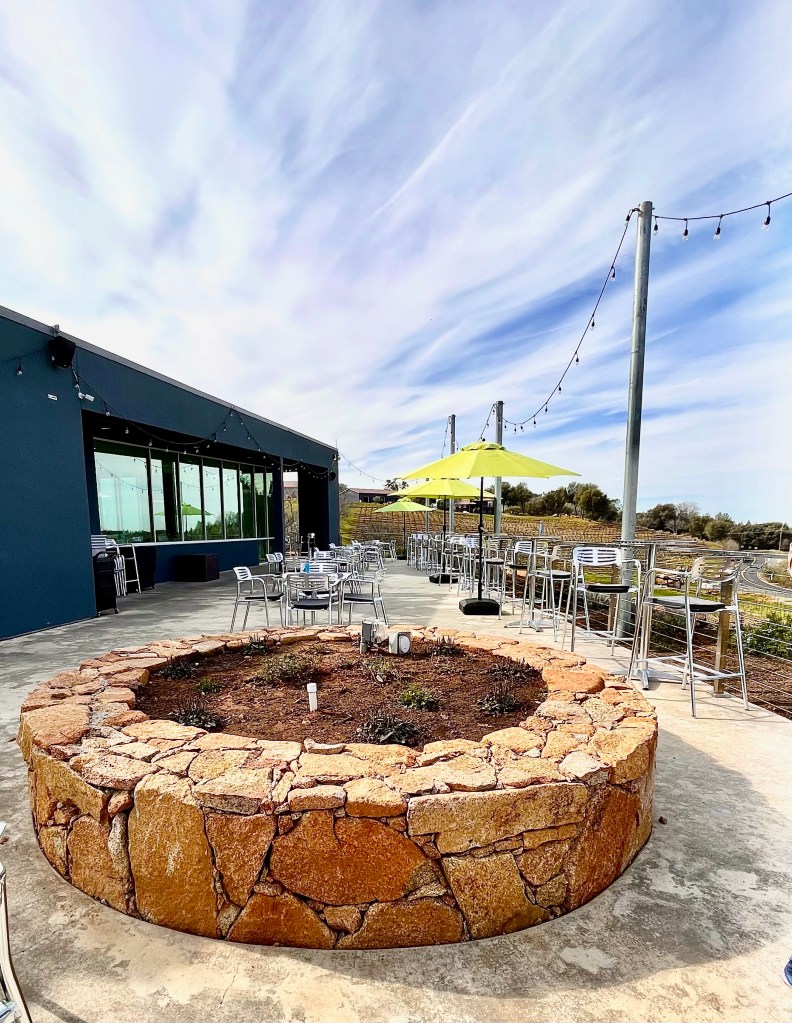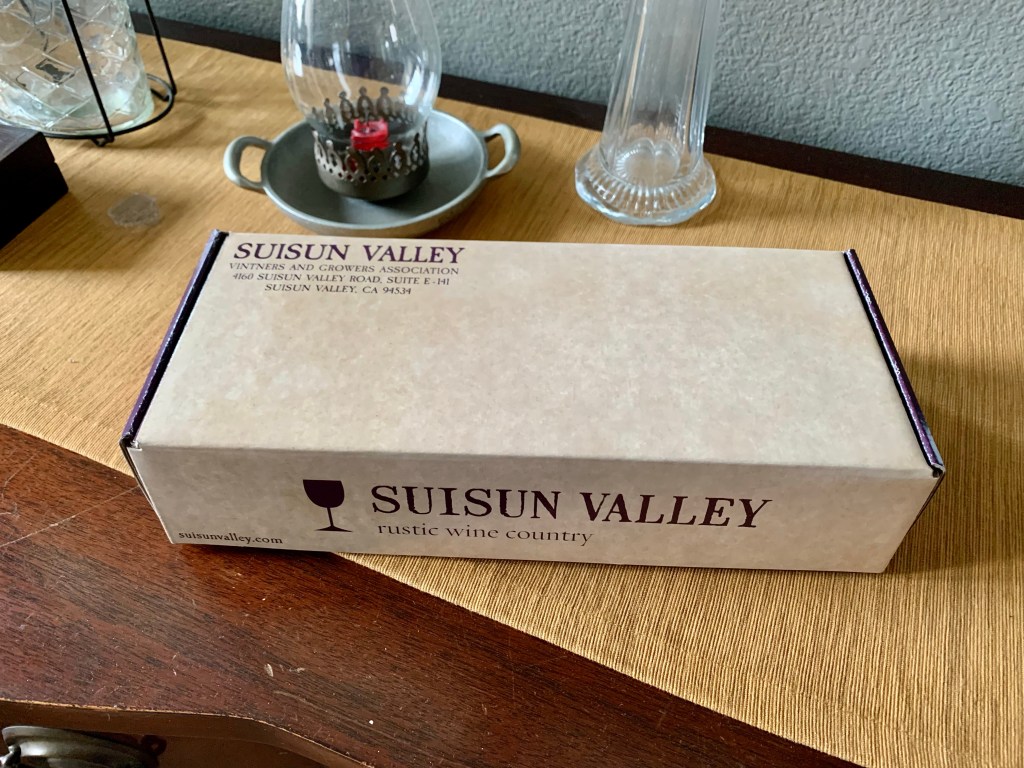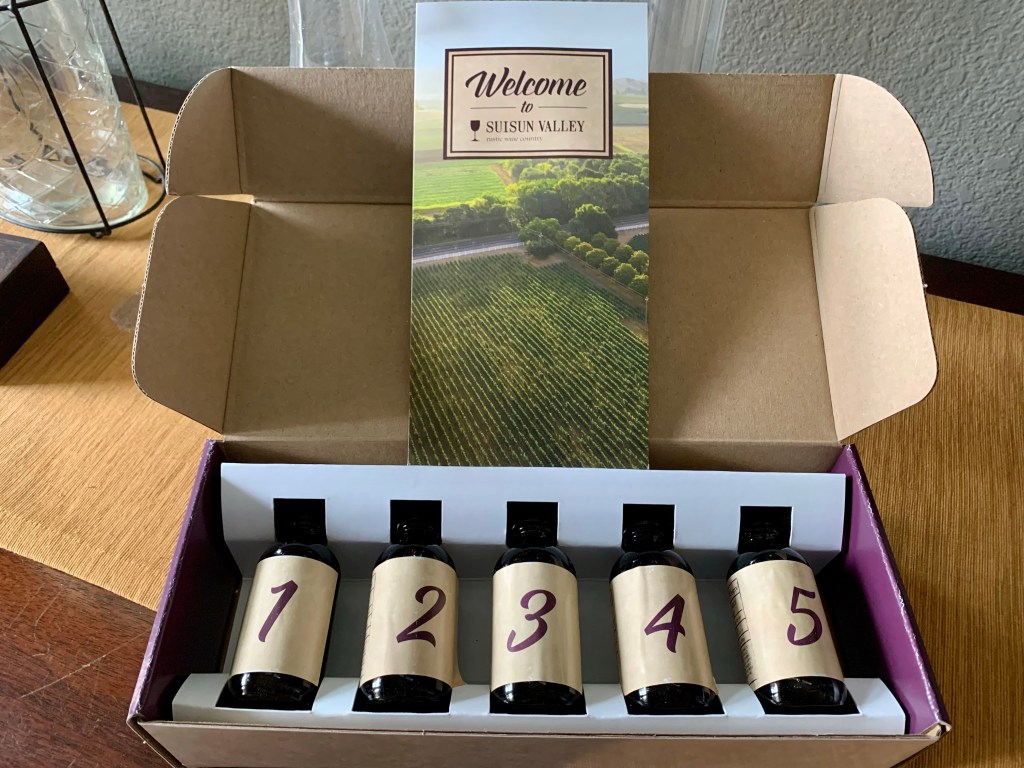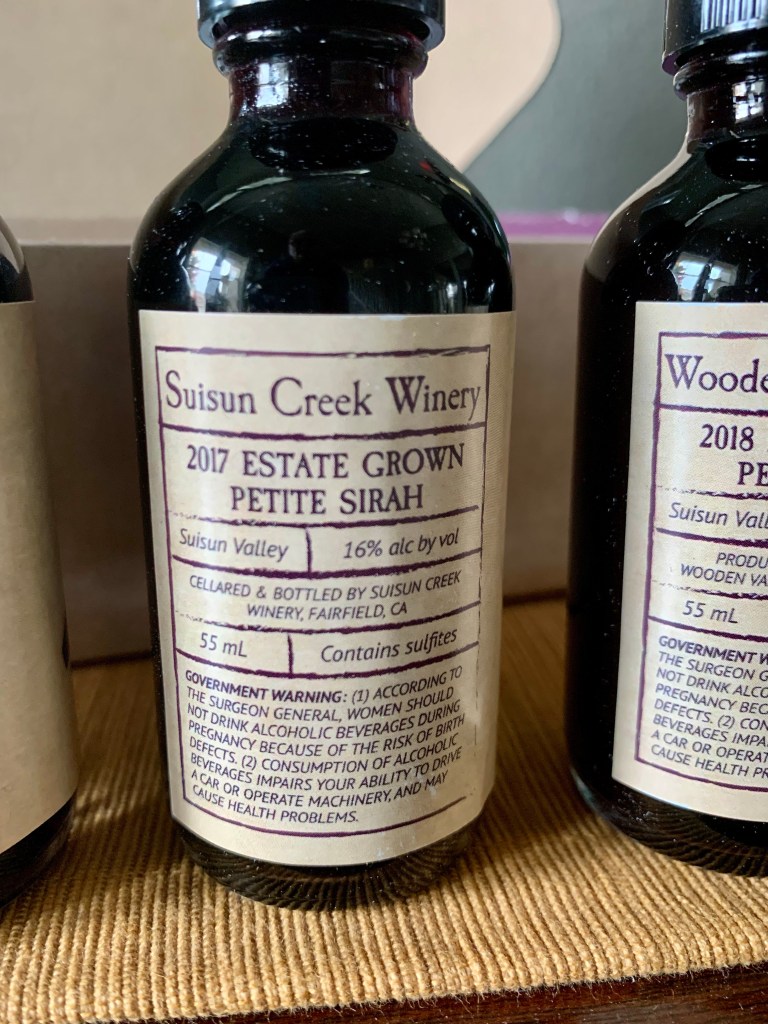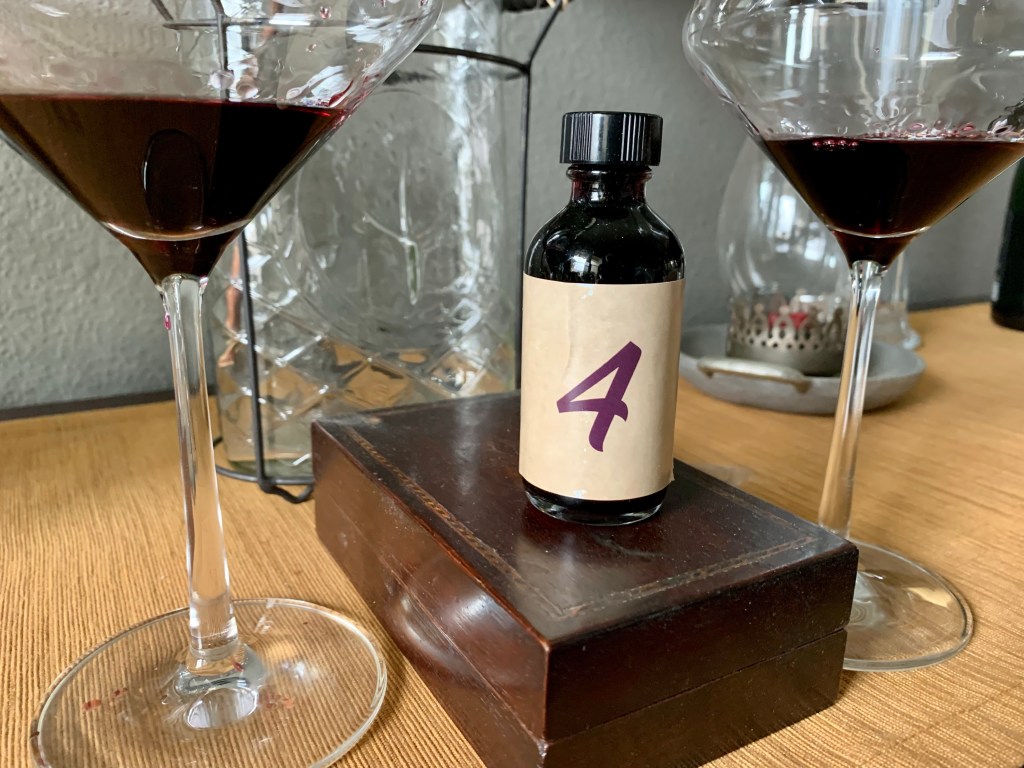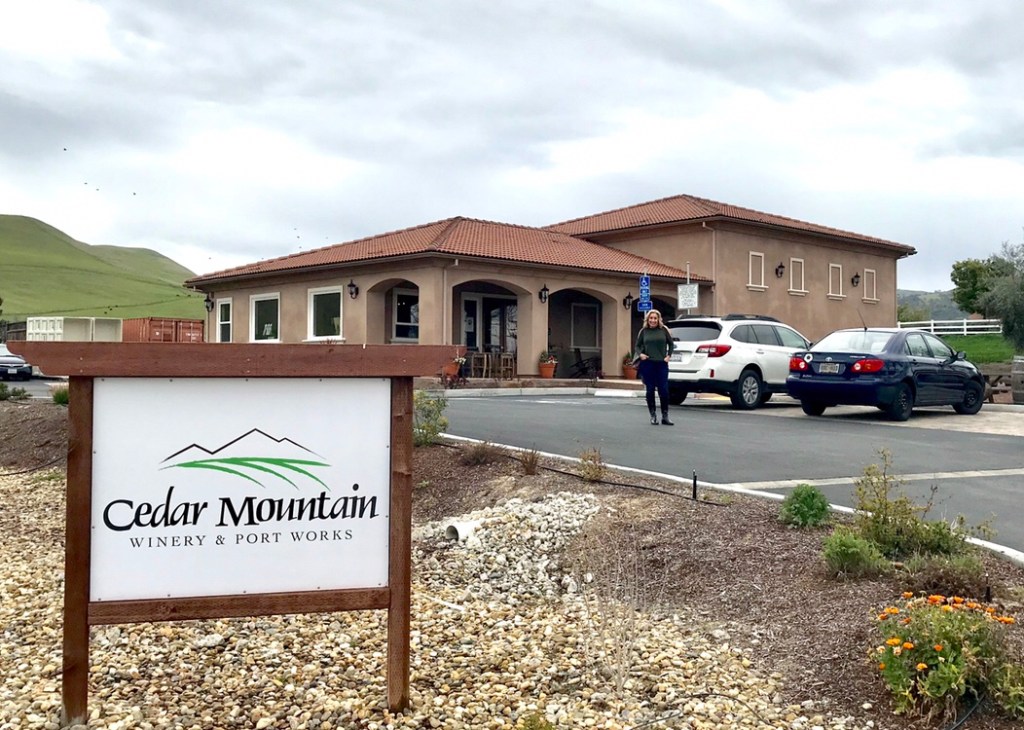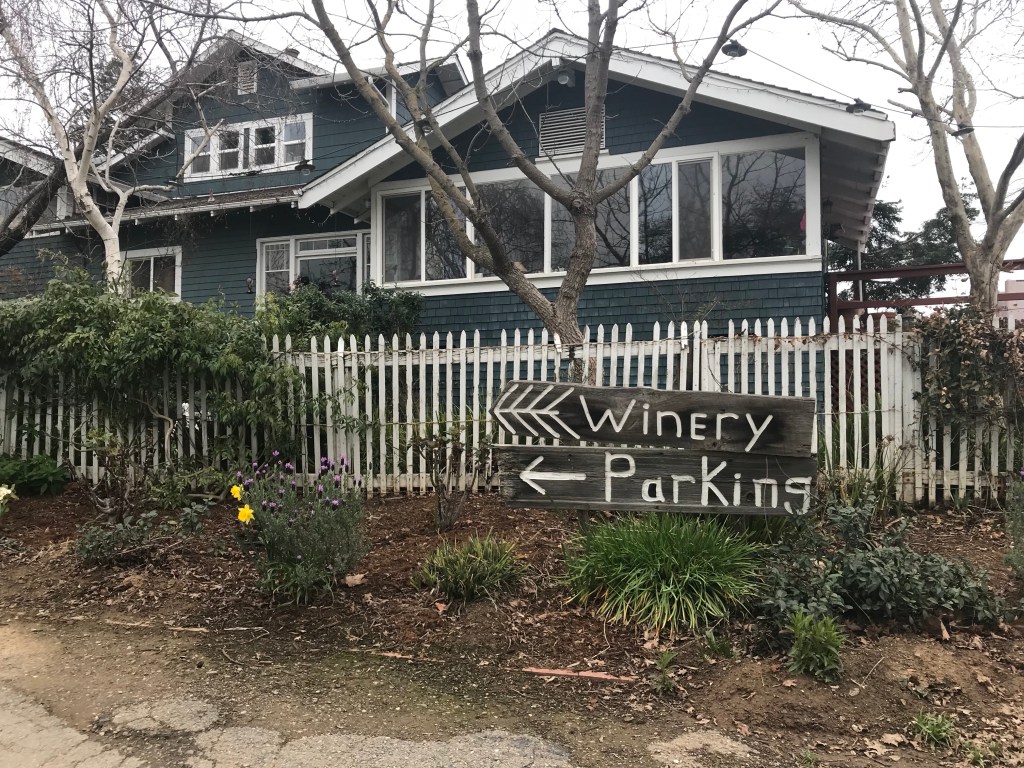The weather forecast was not promising; rain showers and mid-60’s. We had been invited to a private tasting and lunch, with vineyard and winery tour, at Titus Vineyards, hosted by Eric Titus, co-owner of this multi-generational family estate. Undeterred by the forecast, we packed our jackets and raincoats in the car and headed off the winery, located off Silverado Trail, in St. Helena. The sun was shining at home, but we expected to hit rain any minute along the way. Thankfully, they got it wrong. No rain on the drive, and when we arrived it was comfortable in the low 70’s.
This trip was offered as a complimentary media event. All reviews, descriptions, and opinions are our own. We received no additional compensation.
It turned out to be a spectacular day; mid-70’s with puffy, cotton ball clouds. It had rained heavily the previous day, so the vineyard tour was a no-go, but that did not dampen the spirit and enthusiasm of all in attendance. Eric himself greeted us on the covered patio and quickly offered us a tasting of the just-released 2021 Sauvignon Blanc. As we sipped, Eric gave us some of the history of the Titus family and the vineyards.


Titus Vineyards is a 50-acre property, currently planted to 40 acres of vineyards. The land has been in the Titus family since the late 1960’s, though its history goes back much further, with an impressive roster of notable landowners, including General Mariano Vallejo, Dr. Edward Bale, and Charles Krug. When the Titus family acquired the property, the vineyards consisted of a wide range of grape varieties: Semillon, Zinfandel, Carignan, Berger, Pinot Noir, and even Concord. The Titus family replanted and now grows primarily Bordeaux varieties; Cabernet Sauvignon, Cabernet Franc, Petit Verdot, Petite Sirah, and Sauvignon Blanc, while retaining some Zinfandel. To round out the Bordeaux noble grape portfolio, they source Malbec and Merlot from nearby vineyards.
Early in the life of Titus Vineyards, the family sold their grapes to nearby wineries. You may have heard of a few: Charles Krug, Beaulieu Vineyards, Cuvaison. Each of these famous wineries have produced their fine wines using Titus Vineyards fruit. Today, Titus Vineyards uses their grapes to craft distinctive Napa Valley wines in a balanced, Old-World style.
We found Eric Titus to be friendly, engaging, and generous. He and his brother, Phillip, grew up working (and playing) on the family farm. Philip pursued viticulture early on, studying at U.C. Davis and traveling to Bordeaux and Burgundy before starting his career in the Napa Valley. Eric, on the other hand, went a different direction, earning a doctorate degree in Biology, and working in marine science for a number of years. In 1997, Eric came to help with the harvest at the family farm. The business was growing, and in 2002, made the decision to return to Titus Vineyards full time, and is now General Manager and Vineyard Operations Manager.

In 2014, Titus Vineyards broke ground on their new, state-of-the-art winery facility. Elevated on a hill near the east end of the property, the striking edifice is a beautiful, modern merging of cutting-edge viticultural technology and art. Eric escorted us on a tour of the facility, pointing out the architectural design and striking view from the crush pad, though the fermentation room and tasting room, to the vineyards. (The photo does not do it justice!)


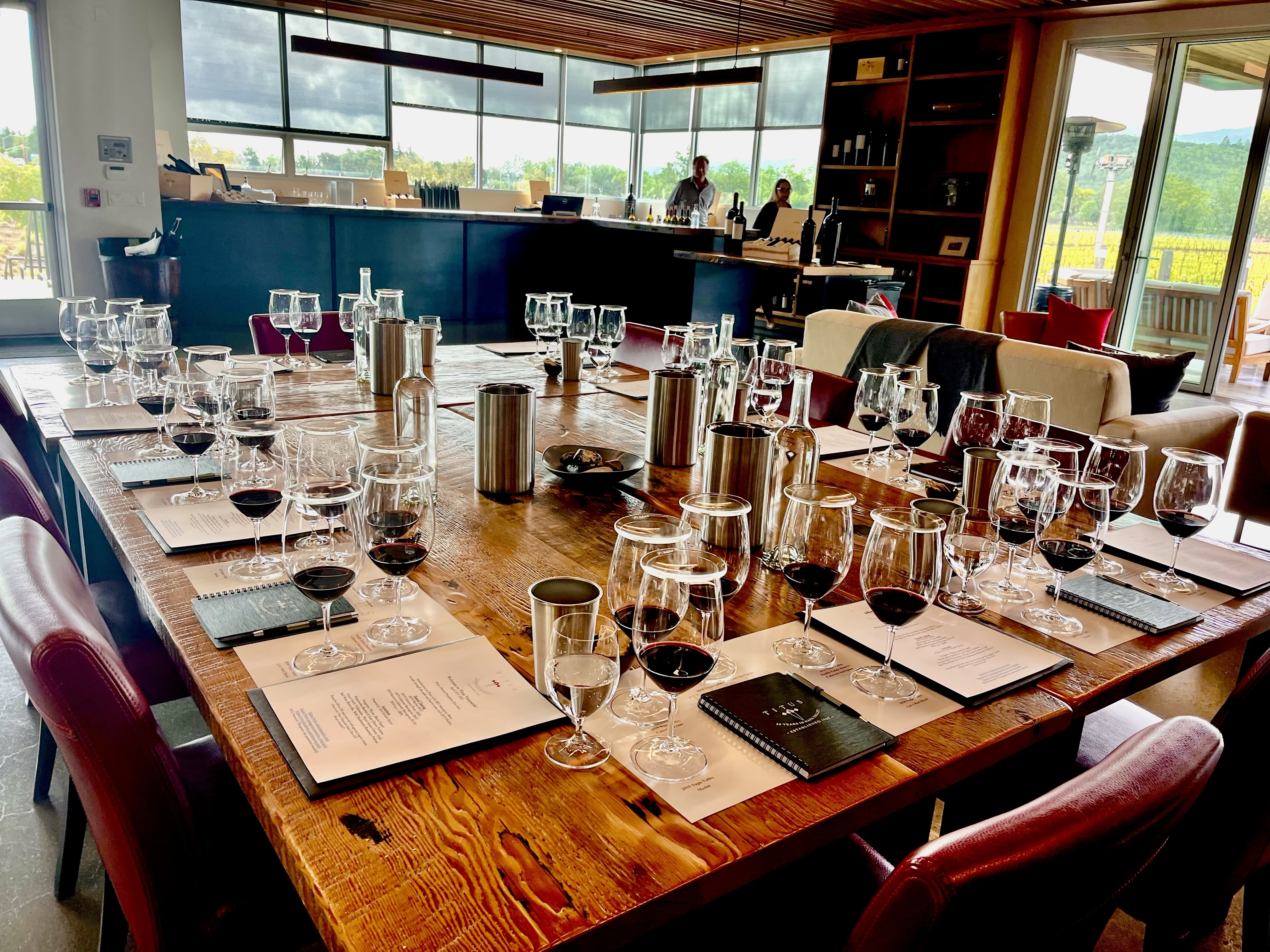

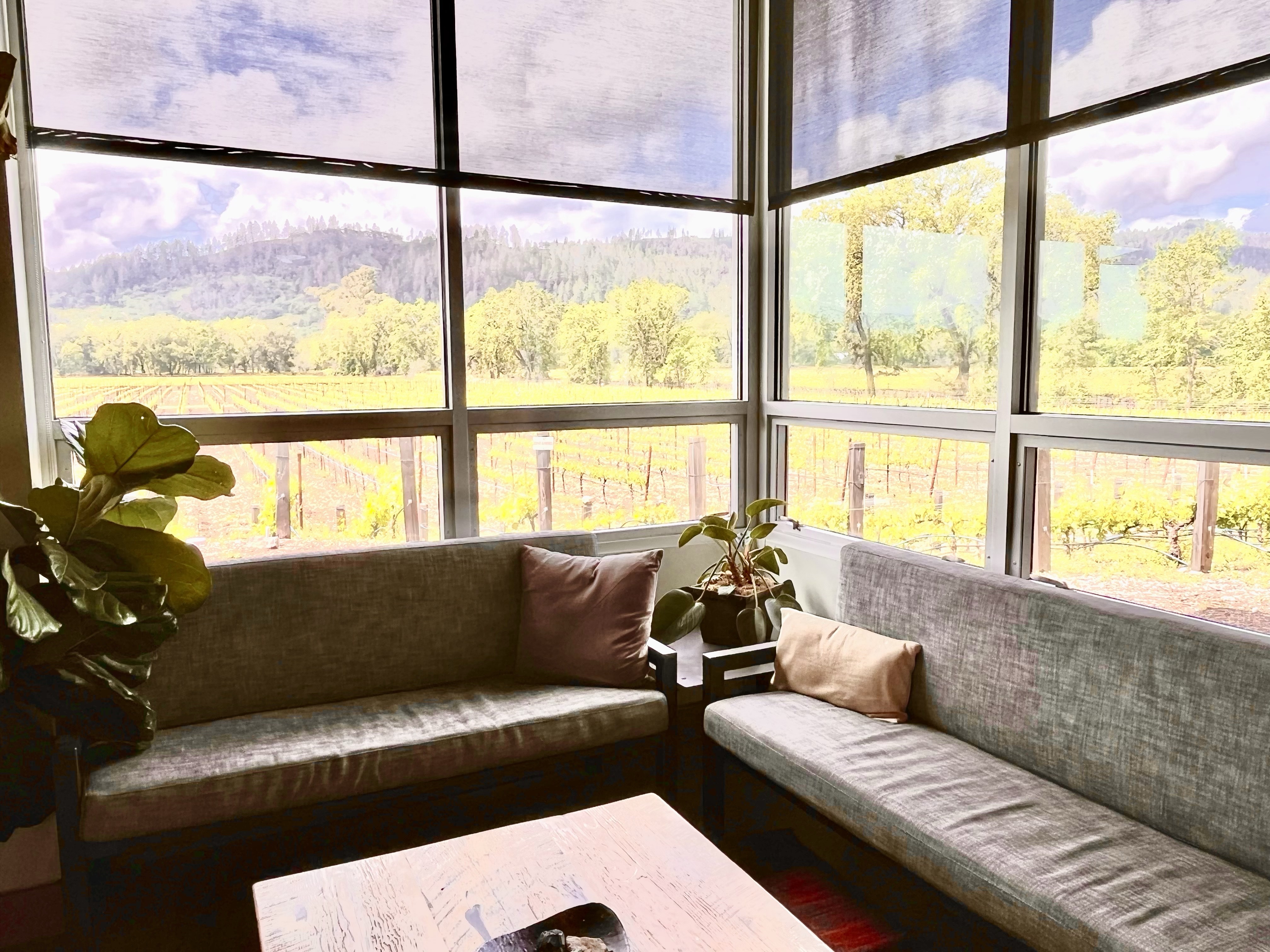
After the tour, we enjoyed a seated tasting and lunch, paired with the delicious wines from Titus Vineyards. With Eric as our guide, this was a most informative and educational tasting. The lunch, catered by Chef Michelle Mutrux, was divine! We provide here some drool-worthy photos, along with tasting notes on the wines.

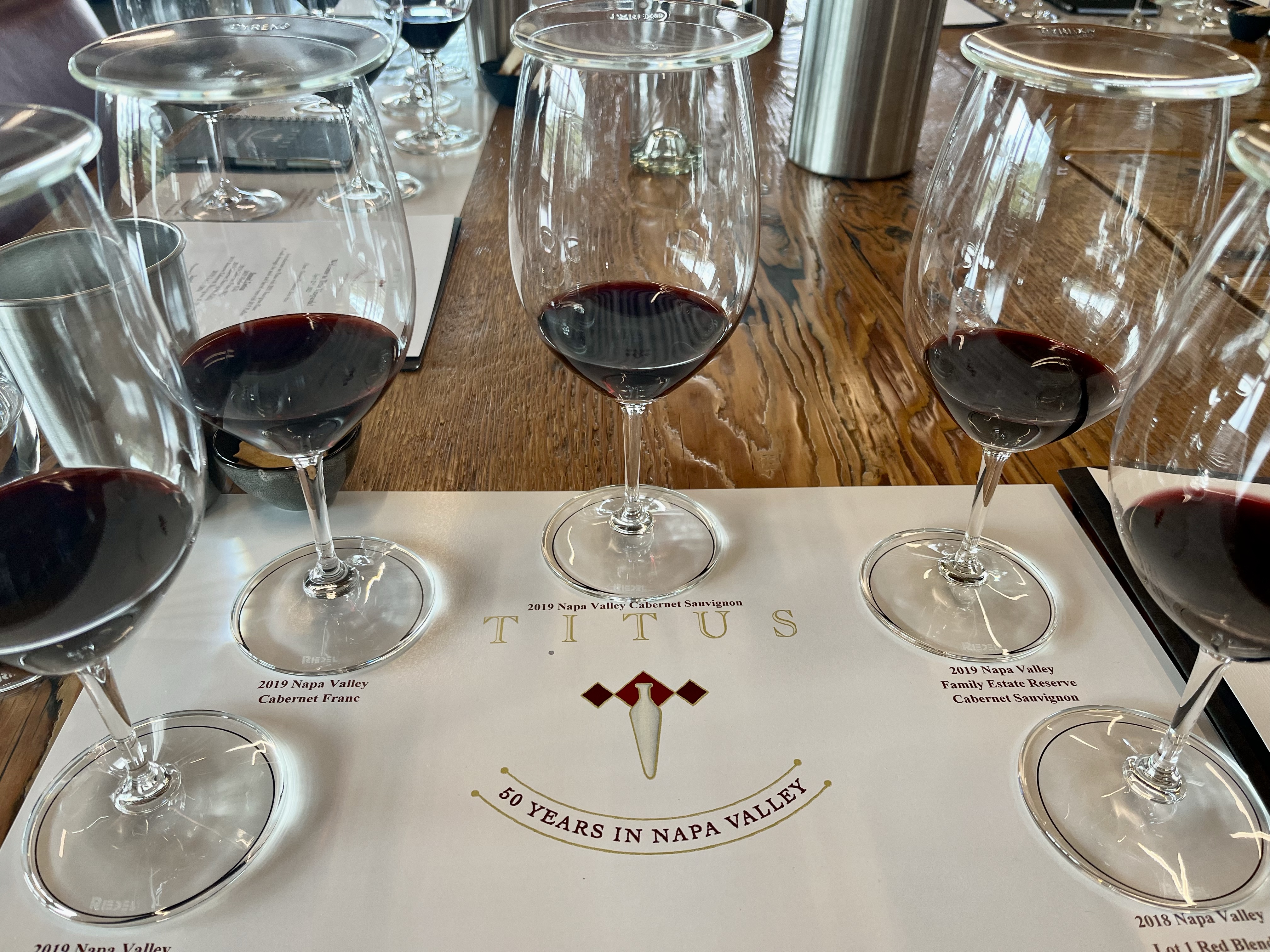


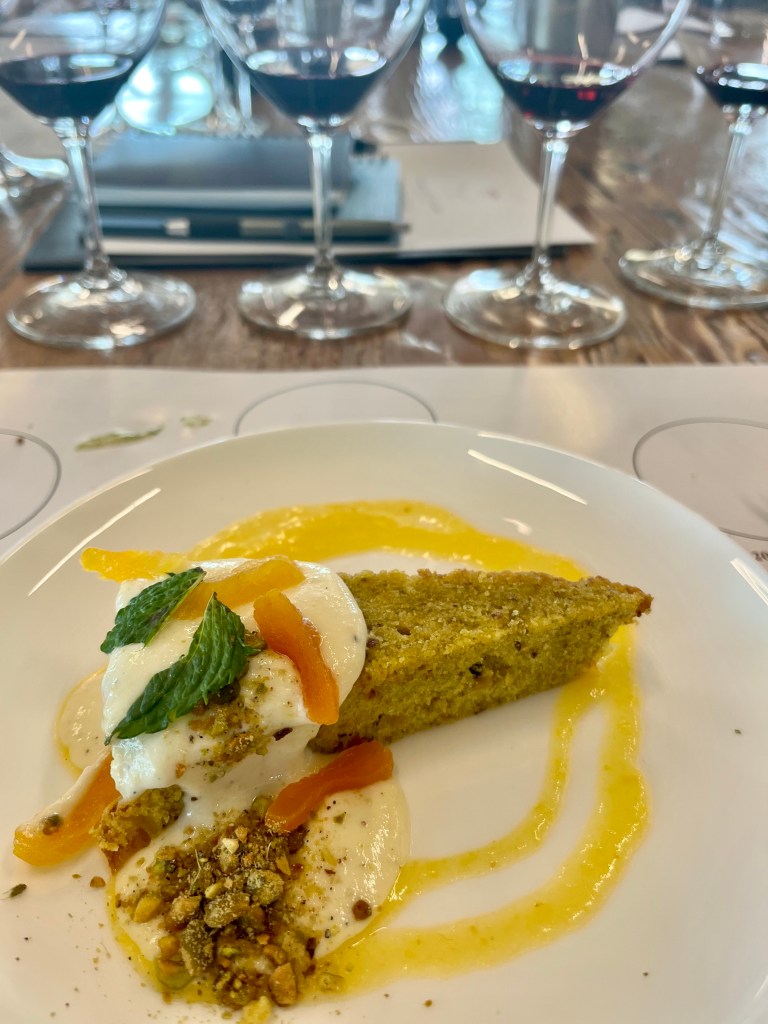

Tasting notes:
Pre-meal, during the tour:
2021 Sauvignon Blanc
Blended with just a touch (5%) of Viognier, the wine is a pale straw color with aromas of tree fruit and stone fruit. On the palate, there is tropical fruit and citrus, with soft, floral, aromatic notes. Dry and crisp, with a pleasing finish. (SRP: $36)
2019 Malbec
Deep garnet color with a ruby rim. Bold black and red fruit on the nose with hints of clove. A swirl in the bowl stains the glass due to its inky color. On the palate, black cherry, ripe raspberry, smoke, coffee, and black pepper. Full bodied, with firm, mouth-drying tannins, and a long finish. (SRP: $55)
Seated tasting and lunch:
2019 Merlot
Fruit sourced from the Sugarloaf Ridge vineyard. Inky purple color with blueberry and black cherry on the nose. Flavors on the palate include bright red cherry, blueberry, blackberry, clove, and black pepper. Well balanced with soft tannins, bright acidity, and a long finish. (SRP: $52)
2019 Cabernet Franc
Deep garnet color with ruby rim. On the nose, black cherry, Marionberry, and just a whiff of bell pepper. The palate is blueberry, black cherry, blackberry, bell pepper/jalapeño, and baking spice. Full bodied with vibrant, bright acidity and firm, yet approachable tannins and a long finish. (This was our favorite of the tasting!) (SRP: $60)
2019 Cabernet Sauvignon
Deep, opaque purple with a garnet rim. This has the classic Cabernet Sauvignon aromas; blackberry, black cherry, cassis, and smoke. On the palate, the fruit is bright and balanced, and includes black cherry, blackberry, raspberry, cassis, and hints of dried herbs, with a bit of bell pepper, vanilla, tobacco, and black pepper on the finish. Smooth tannins with lively acidity. (SRP: $65)
2019 Reserve Cabernet Sauvignon
Inky, almost black in color. On the nose, bright red fruit, cherry, blackberry, and anise. The wine hits the palate with a creamy, soft feel, like cherry cream, with black currant, blackberry, coffee, and mocha notes. Tannins a soft and smooth, balanced with medium acidity, leading to a long, spicy finish. (SRP: $115)
2018 Lot 1 Blend
A unique and fun blend of 45% Petite Sirah, 28% Malbec, 22% Petit Verdot, and 5% Zinfandel to soften and polish. Dark purple color with a garnet rim. Aromas of boysenberry, blackberry, and blueberry greet the nose. On the palate, this is a bid, bold wine with black fruit flavors, blackberry, black cherry, and currant, with chocolate and baking spice notes. Full body, with big tannins and bright acidity. (SRP: $89)
As we mentioned, Eric is quite generous, and as we enjoyed the lunch, conversation, and company, he brought out a couple of bonus bottles; the 2020 Zinfandel and the 2014 Reserve Cabernet Sauvignon. By this point, we were entering food coma mode, so tasting notes are sparse. Suffice it to say the Zinfandel was quite exquisite, and the 2014 Reserve Cab paired perfectly with the last few bites of the short rib.
We are grateful to have been invited to this one-of-a-kind event. We enjoyed meeting Eric Titus and learning more about Titus Vineyards. Though we’d heard of Titus Vineyards before, this was our first visit and tasting. Based on what we experienced, Titus Vineyards will be on our “return to in Napa” list. If you haven’t visited Titus Vineyards, you should make a point of doing so soon.
Cheers!
- By Kent Reynolds and Robyn Raphael-Reynolds
- Photos by Kent Reynolds and Robyn Raphael-Reynolds, except where noted.

